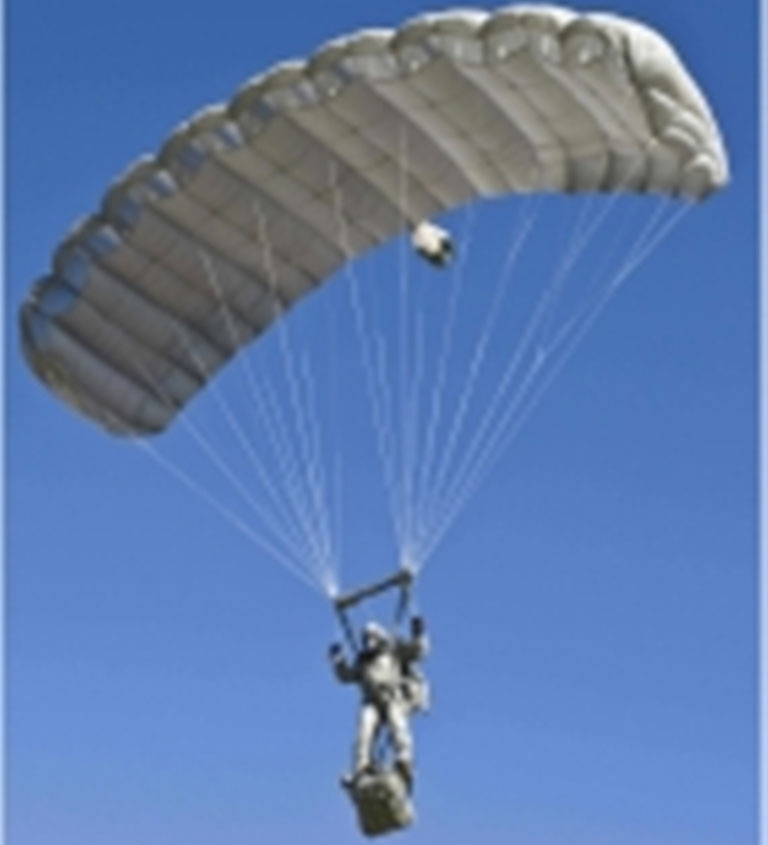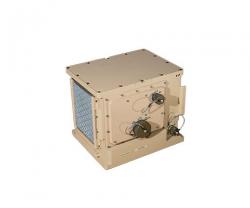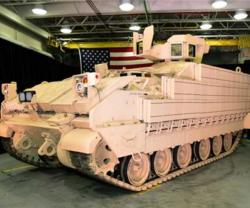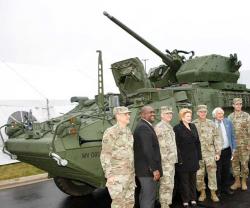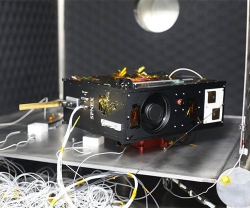Airborne Systems’ New Parachute Capabilities at AUSA
21.10.2013 North America
Airborne Systems, a division of HDT Global, is participating at the ongoing AUSA 2013 Annual Meeting and Exposition (21-23 October; Walter E. Washington Convention Center).
Airborne Systems is featuring the next generation of personnel and cargo delivery parachutes for the modern warfighter.
On display is the Intruder® (photo) which has been type-classified as the RA-1 to replace the MC-4 as the primary tactical parachute by the U.S. Army; T-11 personnel parachute; and other personnel support systems such as the Special Operations Long Range Oxygen Supply 3,000 psig (SOLR™ 3000) that offers 60% more oxygen capacity than the PHAOS; and the Parachutist High Altitude Thermal Suit (PHATS®) - a complete thermal management suit that is lightweight, breathable, windproof and water repellant to protect against extreme cold temperatures during HAHO jumps.
Airborne Systems is also highlighting the capabilities of the FlyClops®, a fully autonomous, one-time use Guided Precision Airdrop System (GPADS) capable of carrying payloads ranging from 200 to 2,200 lb (90 to 1,000 kg) and only requires the impact coordinates and landing direction to provide precision cargo delivery from high altitude.
Airborne Systems is the technological leader in precision aerial delivery as evidenced by FireFly® and DragonFly® being adopted by the U.S. Army for its 2K and 10K JPADS programs.
GPADS lowers reliance on convoys and IED exposure, decreases the forward logistic footprint, reduces aircrew threat exposure and provides vertical and horizontal standoff with fewer deployed/exposed personnel.
Airborne Systems is featuring the next generation of personnel and cargo delivery parachutes for the modern warfighter.
On display is the Intruder® (photo) which has been type-classified as the RA-1 to replace the MC-4 as the primary tactical parachute by the U.S. Army; T-11 personnel parachute; and other personnel support systems such as the Special Operations Long Range Oxygen Supply 3,000 psig (SOLR™ 3000) that offers 60% more oxygen capacity than the PHAOS; and the Parachutist High Altitude Thermal Suit (PHATS®) - a complete thermal management suit that is lightweight, breathable, windproof and water repellant to protect against extreme cold temperatures during HAHO jumps.
Airborne Systems is also highlighting the capabilities of the FlyClops®, a fully autonomous, one-time use Guided Precision Airdrop System (GPADS) capable of carrying payloads ranging from 200 to 2,200 lb (90 to 1,000 kg) and only requires the impact coordinates and landing direction to provide precision cargo delivery from high altitude.
Airborne Systems is the technological leader in precision aerial delivery as evidenced by FireFly® and DragonFly® being adopted by the U.S. Army for its 2K and 10K JPADS programs.
GPADS lowers reliance on convoys and IED exposure, decreases the forward logistic footprint, reduces aircrew threat exposure and provides vertical and horizontal standoff with fewer deployed/exposed personnel.
Previous PostBoeing to Showcase New Technologies at AUSA
Latest news
Latest events
Doha International Maritime Defence Exhibition & Conference (DIMDEX 2026)
19 - 22 Jan 2026Doha - QatarUMEX – SimTEX
20 - 22 Jan 2026ADNEC Centre Abu Dhabi, - United Arab EmiratesWorld Defense Show (WDS) 2026
08 - 12 Feb 2026Riyadh - Saudi ArabiaSAHA EXPO International Defence & Aerospace Exhibition
05 - 09 May 2026İstanbul Expo Center - Turkey

